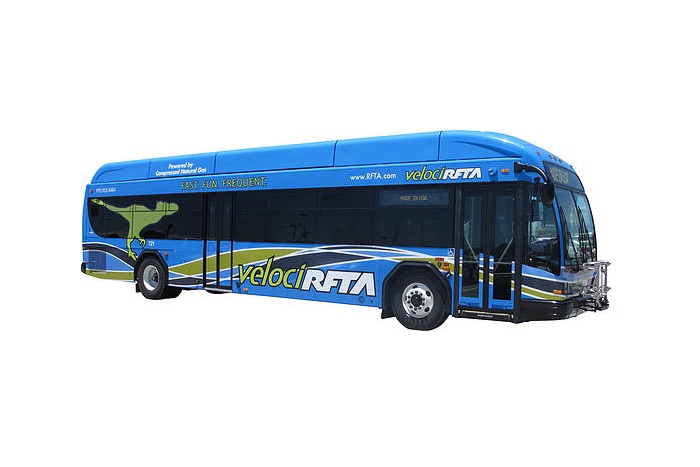BRT FAQ #004: The bus itself
Here’s just about everything you could ever want to know about the wheels on the bus (they go round and round), the wipers on the bus (they go swish swish swish), and everything in between.

Every day, our readers, our friends, and our countrymen ask questions–to us, to each other, to the City, to the Internet-about Richmond’s proposed Bus Rapid Transit system. One or two times a week, we’re examining one small piece of the BRT with a microscope. As we go, we’ll be compiling an easy-to-read resource for any interested party.
If something new comes up, you think we’ve missed an important component, or you have more data for us, feel free to let us know in the comments or submit a correction (see the options at the bottom of this post). We want to have a complete a picture as possible.
The full list of BRT FAQs will always be available for you to leaf through.
— ∮∮∮ —
I’d like to introduce you to the Gillig 40’ Low Floor BRTPLus CNG:

As described by the Gillig marketing materials:
This sleek, aerodynamic design incorporates a raised, raked-back front cap blended into a full length, contoured roofline. Its modern profile makes a distinguished statement to your community.
GRTC has a contract with Gillig for 40 of these distinguished guys1, which (unfortunately) will not have a velociraptor painted on the side, but will feature the blue, white, and green GRTC Pulse branding. Apart from a special look-and-feel2, the buses will also come with a stack of features and technology that allow them to zoom about the BRT route as rapidly as possible.3
Most important of all of these features is platform-level boarding4. Each of the BRTPlus’s doors (both on the right side) allow you to walk on without climbing any stairs–thus speeding things up. While this may seem like splitting hairs, think about the last time you climbed up a few stairs on a freaking humid August day in Richmond and then multiply that time by 40 (the capacity of the BRTPlus). That’s some time savings, y’all!
As for some of the nerdier tech:
- Automatic Vehicle Location System — The current GRTC fleets sports a system by Clever Designs that provides realtime info back to GRTC’s secret mountain lair/control room so they can make important bus-related dispatch descisions. The new BRT buses will be equipped with the same technology, but, as the Systems Engineer Management Plan (PDF) notes, location data transmission rates need to increase 30-fold to be used to influence traffic-signal priority5.
- Automated Passenger Count System — An infrared technology for counting the number of people on a bus (also by Clever Devices)–which could, depending on how things are set up, influence when a BRT bus gets traffic-signal priority.
- Automated Annunciation System — You know, kind of like “Stand clear of the closing doors, please.” ADA compliant!
- On‐board WiFi — Free WiFi! Way more rapid with a way better view than your local coffee shop.
As of 2011, GRTC maintained a fleet of 151 standard buses, of those about 40% are older models of the Gillig Low Floor bus. So these new buses may look a bit familiar, but are fancy, new, and slightly futuristic. They’re not as futuristic as what they’ve got in Metz, France, but they’ll definitely get you to where you’re going rapidly.
More BRT FAQs
- BRT FAQ #001: So what’s a BRT?
- BRT FAQ #002: Where will the BRT go?
- BRT FAQ #003: What’s the timeline, and when did it all begin?
- BRT FAQ #005: What’s this dang thing cost to build?
- BRT FAQ #006: The left turn situation
- BRT FAQ #007: What does an outside expert think?
- BRT FAQ #008: What should I know before attending a public meeting?
- BRT FAQ: Holiday status report
- BRT FAQ #009: Who even knows about the BRT?
- The TIGER grant application lists total vehicle costs at $9,605,863. ↩
- Unique branding is worth three points on the Institute for Transportation & Development Policy’s BRT Scorecard. ↩
- Some of the particulars may changes as GRTC, its partners, and community folks finish nailing down the details. ↩
- Worth an entire seven points on the ITD’s scorecard! ↩
- Giving these buses traffic-signal priority is one of the ways to hurry them through existing and busy intersections (think Broad & Belvidere). ↩
-
Recommend this
on Facebook -

Report an error
-

Subscribe to our
Weekly Digest




There are 16 reader comments. Read them.